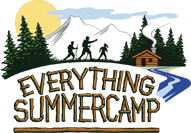Hey, Fishy Folks!
Today, April 1, is modernly known as April Fools Day. But, as we’ve covered in Blog posts past, the first of this month wasn’t always called this. And the day April Fools wasn’t always called April Fools Day either. It was called April Fish Day—no joke. For today’s Blog post, I thought I’d share a few little known facts about April Fools and April Fools related items. Check it out:

Something Smells Fishy Here…
It probably sounds like a cheap gag, but April Fools Day likely came from the French holiday, ‘April Fish Day’. In France, they used to celebrate a different version of the holiday in which the same prank was attempted on friends, acquaintances, and strangers of sticking a picture of a fish on their backside and calling out “April Fish!” in French.
April First for Two Days Straight
Likely derived from the April Fish custom, the Scots and the French came up with the ‘Kick Me’ sign. Scots REALLY like April Fools Day. They like it so much that they celebrate it twice. The next day is called ‘Taily Day’ which is all about sneaky pranks in which kids tried to stick strips of paper to someone’s backside. When successfully executed, the jokers gave their victims a new tail.
The Whoopee Whoopsie
Did you know that just one man in responsible for so many of the novelty gag objects you can think of such as the handshake buzzer, the snake-in-a-can, the stink bomb, and so much more—Soren Sorenson Adams. Back in 1930, he actually turned down the rights to the granddaddy of all gag toys: the Whoopee Cushion, declaring the entire premise to be “too indelicate.” Whoops.
In conclusion, watch out today for anybody trying to attach something to your backside, sit you down somewhere specific, or shake your hand. Maybe enjoy a Fish Fry as today lands on a Friday. Happy April Fish Day! And, as always, thanks for reading.
- John








